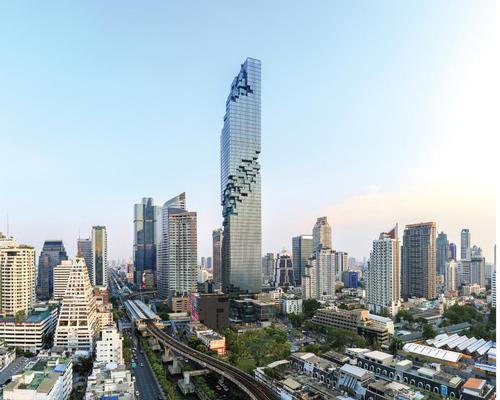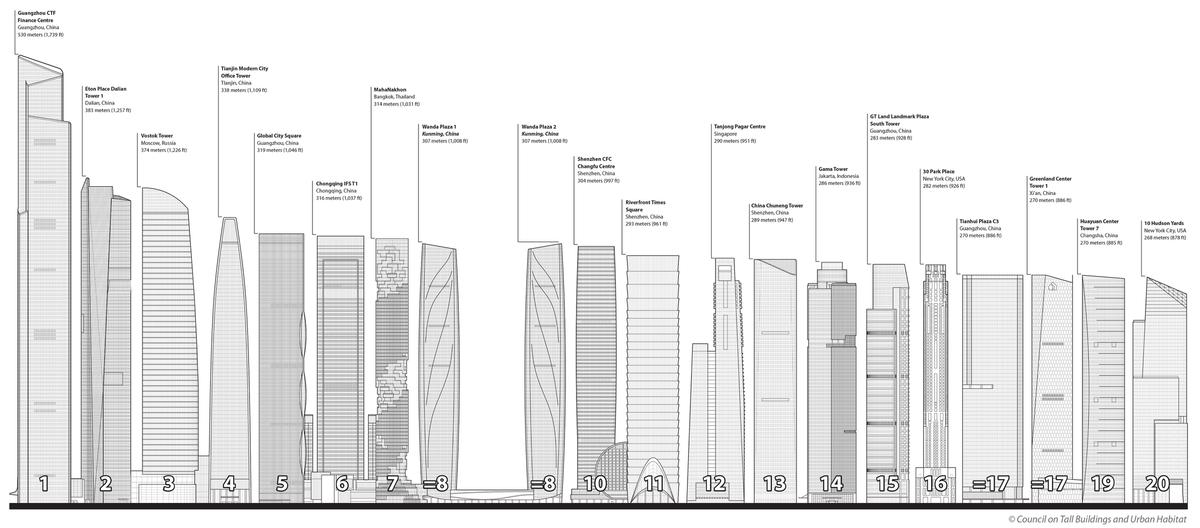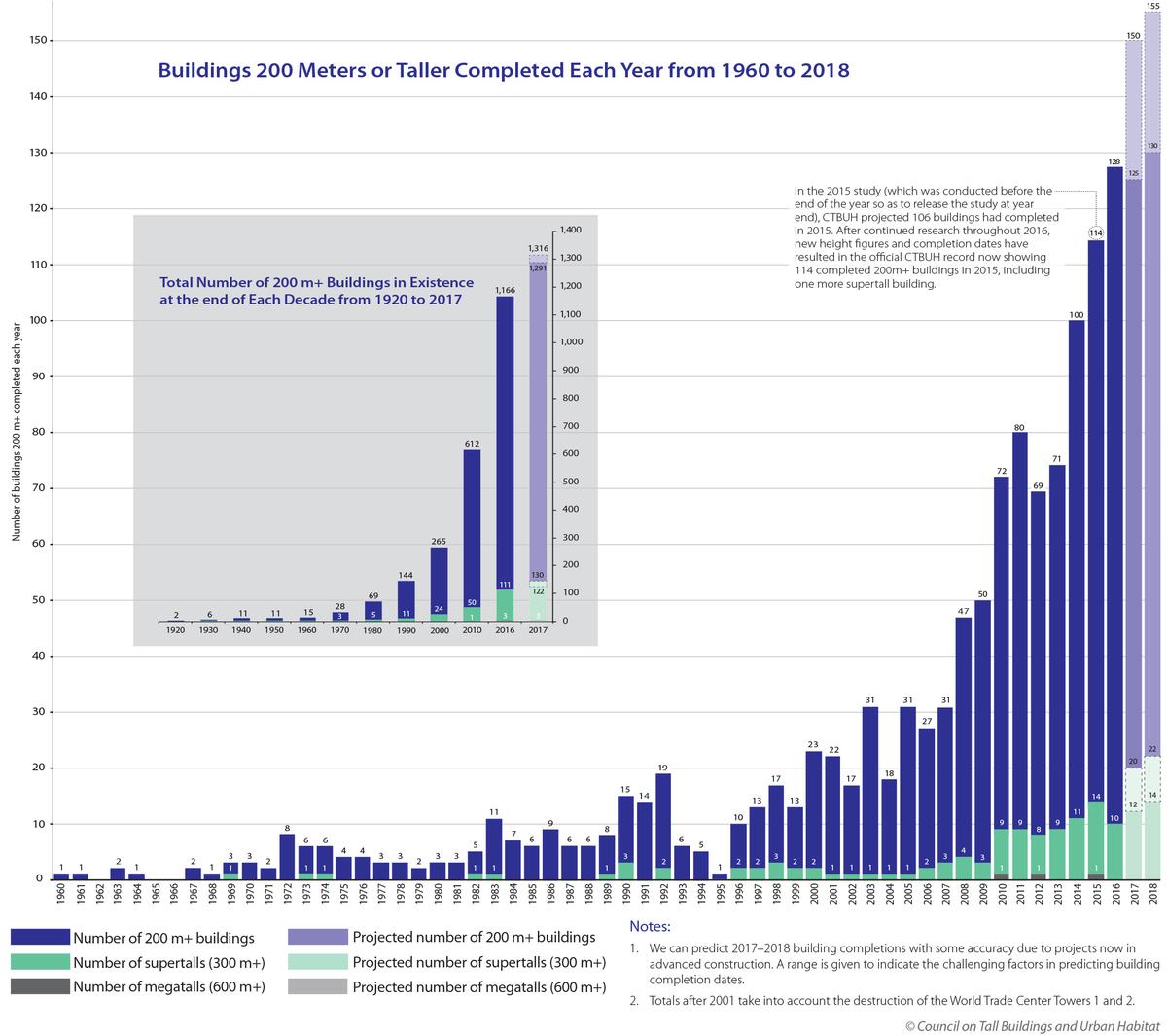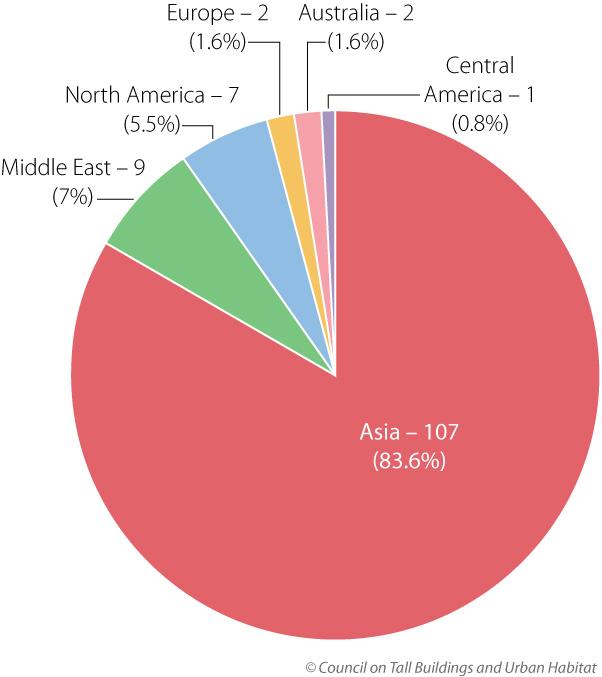16 Jan 2017
Leisure developers dream big as skyscraper construction reaches record high
BY Kim Megson

Developers around the world are increasingly looking to the skies, with more buildings over 200m (656ft) completed in 2016 than in any other year.
In its review of the year, the Council on Tall Buildings and Urban Habitat (CTBUH) has determined that 128 buildings of 200m height or greater were completed around the world – a marking the third year running the record has been broken.
The figure represents a significant rise from the 114 completions in 2015. It takes the total number of 200m+ buildings in the world to 1,168 – a 441 per cent increase from the year 2000, when only 265 existed.
Of the newly-finished towers, 10 are classed as supertalls – buildings of 300m (984.2 ft)or higher. However, delays mean this is significantly fewer than the 18-27 supertalls projected for completion by the CTBUH; suggesting that engineering and funding challenges remain for developers seeking to create new buildings that will garner a place on the list of the world’s very tallest.
The huge rise in skyscrapers has been good news for leisure developers and hotel operators, with 38 of the new towers (30 per cent) classed as mixed-use, often including a hotel component, and three built purely to house hotels. Of the 20 tallest towers completed last year, over half contain a hotel, including Robert A.M. Stern Architects’ 30 Park Place in New York, SOM’s Tanjong Pagar Centre in Singapore, and Ole Scheeren’s MahaNakhon in Bangkok – which has a 150 room boutique hotel operated by Marriott International and Ian Schrager.
Asia has retained its status as the world’s skyscraper epicentre, completing 107 last year, representing 84 per cent of the total. For the ninth year in a row, China is the biggest 200m+ tower builder, with a record 84, including the Guangzhou CTF Finance Centre – the tallest building to complete in 2016 and currently the fifth tallest building in the world. Remarkably, 31 Chinese cities had at least one 200m building completion, with Shenzhen outperforming any other city in the world with 11, and 328 are under construction in the country. According to the CTBU report, “it’s impossible to decouple the enormous boom in global skyscraper construction from the rapid urban development of China.”
From an engineering perspective, the number of buildings completed in 2016 with composite structural systems hit an all-time high, with 68, or 53 per cent of the total. According to the report, “composite construction represents an effort to use the optima properties of steel and concrete and counteract their respective weaknesses,” and therefore will continue to dominate, “particularly as tall buildings continue to proliferate in seismically active regions like China, which mandate robust structural responses.”
The trend for tall and supertall towers looks almost certain to continue in the short-term, with a number of high-profile 200m+ projects due for completion in the next few years. These include the 555m (1,821ft) Lotte World Tower in Seoul (2017), the 426m (1,400ft) One Vanderbilt in New York (2020), and Santiago Calatrava’s Dubai ‘Tower’, which at 828m (2,700ft) is set to be the tallest in the world (2020).



Close Window